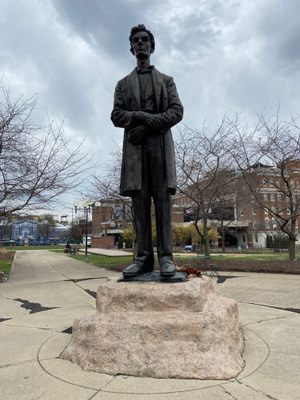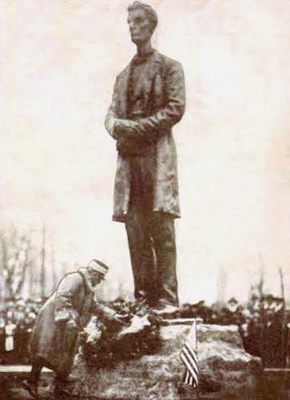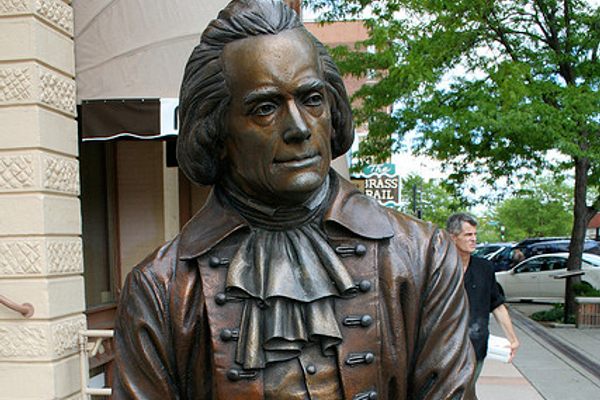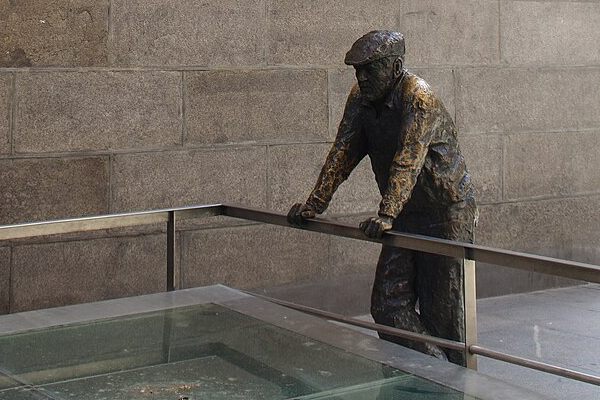About
Charles P. Taft, brother of former U.S. President William Howard Taft, hoped to honor another former commander-in-chief but instead caused a controversy that found its way into the halls of the U.K. Parliament.
Taft commissioned American sculptor George Grey Barnard to sculpt an 11-foot-tall statue of Abraham Lincoln as a gift to the city of Cincinnati in 1917. But rather than basing his work on airbrushed photos and idealized paintings, Barnard sought out life masks of Lincoln’s face from before his presidency. This Lincoln has deep wrinkles penetrating his face, thick veins on his hands, and is missing the signature beard he grew while campaigning for president in 1860.
Critical reaction was almost immediately divided, receiving condemnation even from Lincoln’s own son Robert Todd: “When the statue was exhibited in the early winter, I was deeply grieved by the result of the commission which Taft had given Barnard. The result is a monstrous figure, grotesque as a likeness of President Lincoln, and defamatory as an effigy.”
The harsh response proved problematic when Taft prepared to donate a copy of the statue to the United Kingdom to stand across from Westminster Abbey. Though initially enthusiastic about the gift, Parliament instead chose to erect the “effigy” in a far less prominent spot in Manchester.
A century later, Barnard's Lincoln has outlasted its harshest critics. It remains today in Cincinnati’s Lytle Park, facing downtown and suggesting almost none of the controversy it once incited.
Related Tags
Know Before You Go
Along with the casting sent to Manchester, England, there is a second copy that stands at the Louisville Free Public Library in Louisville, Kentucky.
Published
April 19, 2022


































